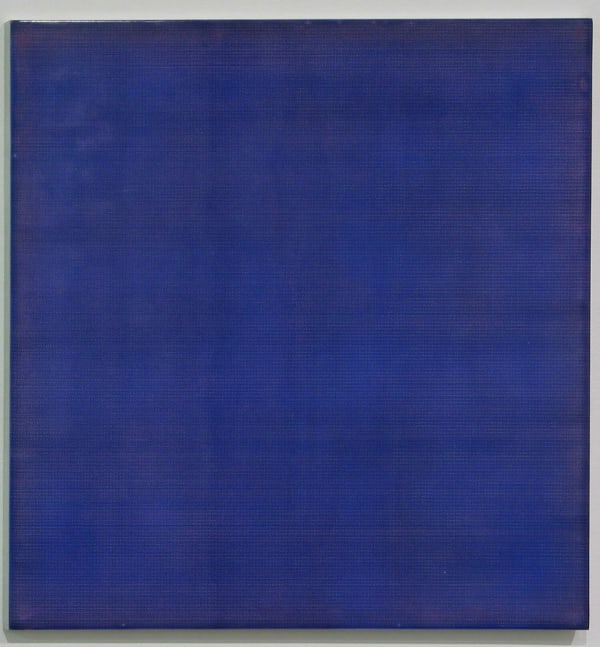John Andrews: Irreducible Calculations
Like the simplest of universal laws applied repeatedly, John Andrews’ paintings unfold into vast complexity. At a distance each painting is an evocative and gorgeous field of color. At close range, intricate details and patterns emerge, along with a multitude of colors and layers.
In his book, A New Kind of Science, Stephen Wolfram argues that the most complicated behavior imaginable arises from very simple rules.
Through a repetitive method of computation, one can discover unexpected natural results. Iowa-based artist John Andrews works with pigments and wax in a similar way. Starting with an elemental grid, Andrews painstakingly repeats dots and lines in the wax using a pounce tool and a stylus. The handmade nature of the process, replicated in numerous layers, inevitably produces slight, unpredictable irregularities. Organic patterns emerge through the progression of randomness within structure.
-
 JOHN ANDREWS03-10, 2003pigment and wax on aluminum6.75 x 6.75 x .75 inches
JOHN ANDREWS03-10, 2003pigment and wax on aluminum6.75 x 6.75 x .75 inches
17.145 x 17.145 x 1.905 cms -
 JOHN ANDREWS03-6, 2003pigment and wax on aluminum30.25 x 30.25 x .5 inches
JOHN ANDREWS03-6, 2003pigment and wax on aluminum30.25 x 30.25 x .5 inches
76.835 x 76.835 x 1.27 cms -
 JOHN ANDREWS04-3, 2004pigment and wax on aluminum18.25 x 18.25 x .5 inches
JOHN ANDREWS04-3, 2004pigment and wax on aluminum18.25 x 18.25 x .5 inches
46.355 x 46.355 x 1.27 cms -
 JOHN ANDREWS04-2, 2004pigment and wax on aluminum18.25 x 18.25 x .5 inches
JOHN ANDREWS04-2, 2004pigment and wax on aluminum18.25 x 18.25 x .5 inches
46.355 x 46.355 x 1.27 cms -

-

-

-
 JOHN ANDREWS04-1, 2004pigment and wax on aluminum18.25 x 18.25 x .5 inches
JOHN ANDREWS04-1, 2004pigment and wax on aluminum18.25 x 18.25 x .5 inches
46.355 x 46.355 x 1.27 cms








